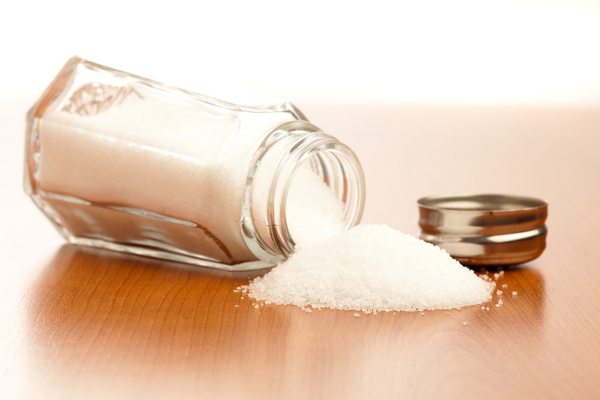Salt Levels In Processed Foods Still Too High

Despite recent calls for food manufacturers to cut back on salt in their products, sodium levels in processed and restaurant foods have changed little in recent years, a new study suggests.
The study, conducted by the advocacy organization Center for Science in the Public Interest, reviewed the sodium content of 402 processed foods sold at supermarkets, and 78 fast foods sold at chain restaurants.
Between 2005 and 2011, the sodium content of processed foods declined, on average, by 3.5 percent, and the sodium content of fast foods increased by 2.6 percent. Both of these changes were so small that they could have been due to chance, said study researcher Dr. Stephen Havas, a professor of preventive medicine at Northwestern University Feinberg School of Medicine.
Currently, 9 in 10 Americans eat too much salt, according to the Centers for Disease Control and Prevention. The government recommends people limit their salt intake to 2,300 milligrams per day. (For those who are 51 years or older, African-American, have high blood pressure, diabetes or chronic kidney diseases, the recommendation is 1,500 mg per day.)
"That’s nearly impossible for people to do right now, given how much salt is in restaurant and processed foods," Havas said. The average American takes in about 3,300 milligrams of sodium per day. Too much sodium in the diet raises blood pressure, which is a risk factor for heart disease and stroke, the CDC says.
Overall, the amount of salt we consume from processed and fast foods needs to decline by at least 50 percent to have benefits for people's health, Havas said. (Most of the salt we consume is through processed and fast foods, and not from a salt shaker, the researchers say.)
The new findings suggest that change happens too slowly when the food industry is asked to voluntarily reduce the sodium content of its foods, Havas said. Instead, the Food and Drug Administration should take steps to limit the amount of sodium allowed in different categories of food, he said.
Get the world’s most fascinating discoveries delivered straight to your inbox.
High sodium foods
Some of the saltiest foods in the study were smoked bacon (1,803 mg of sodium per 100-gram serving), Caesar salad dressing (1,079 mg) and hot dogs (927 mg).
And a fast food meal of chicken strips and fries contained, on average, 1,239 mg of salt in 2011.
The study did not include products labeled as low sodium or sodium-free because the intent of the study was to focus on regular foods that had ample opportunity to reduce sodium levels between 2005 and 2011.
The researchers found wide variation in sodium levels in fast food. For instance, a medium serving of Burger King french fries had nearly twice the sodium as a medium serving of MacDonald's french fries (670 mg versus 270 mg per 100 g serving).
"Examples like those demonstrate that many companies could easily lower sodium levels and still have highly marketable food," the researchers wrote in the May issue of the journal JAMA Internal Medicine.
Some companies have made commitments to lower sodium in the coming years. For instance, MacDonald's says it will cut the sodium content of its whole menu 15 percent by 2015. But, Havas said, even if companies follow through with these commitments, they are still not enough.
Salt controversy
Not all studies have been able to find benefits of a reduced salt diet. A review published in 2011 found that moderate reductions in salt in the diet lowered blood pressure, but did not reduce participants' risk of having heart disease or dying.
In a 2012 interview, Dr. Robert J. Myerburg, a professor of cardiology and physiology at the University of Miami Miller School of Medicine, said that for people with heart failure and high blood pressure, lowering salt intake has clear benefits, but for people in the general population, it's less clear what the right level of salt is.
But people should be reasonable about how much salt they consume, Myerburg said, and the current guidelines are a reasonable recommendation, he said.
In an editorial accompanying the new study, Dr. Mitchell Katz of the Journal of the American Medical Association noted that government regulation of salt content may be difficult. "Regulating calorie size, or the maximum of a necessary nutrient, such as salt, will always raise questions of whether the government is going too far in regulating our lives."
Follow Rachael Rettner @RachaelRettner. Follow MyHealthNewsDaily @MyHealth_MHND, Facebook & Google+. Originally published on LiveScience.

Rachael is a Live Science contributor, and was a former channel editor and senior writer for Live Science between 2010 and 2022. She has a master's degree in journalism from New York University's Science, Health and Environmental Reporting Program. She also holds a B.S. in molecular biology and an M.S. in biology from the University of California, San Diego. Her work has appeared in Scienceline, The Washington Post and Scientific American.
